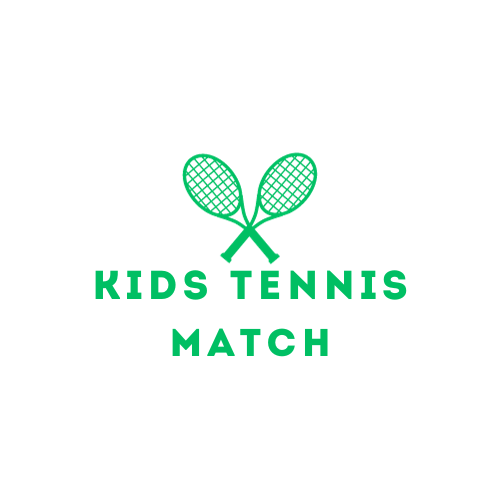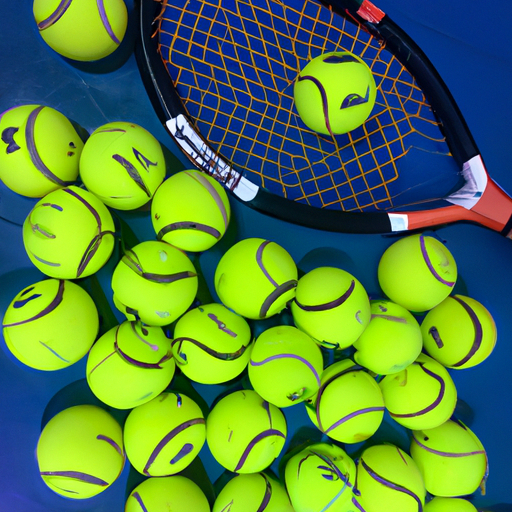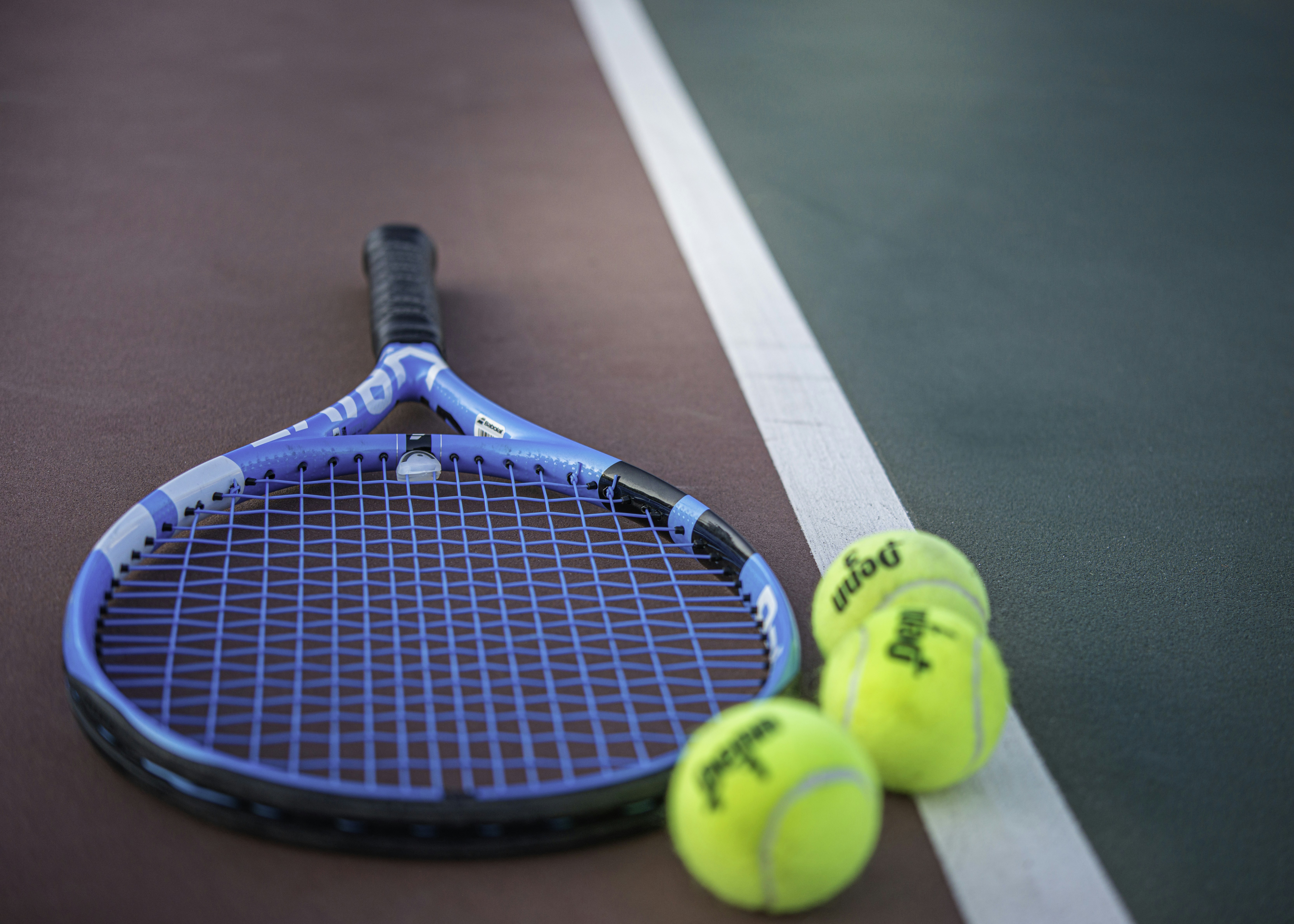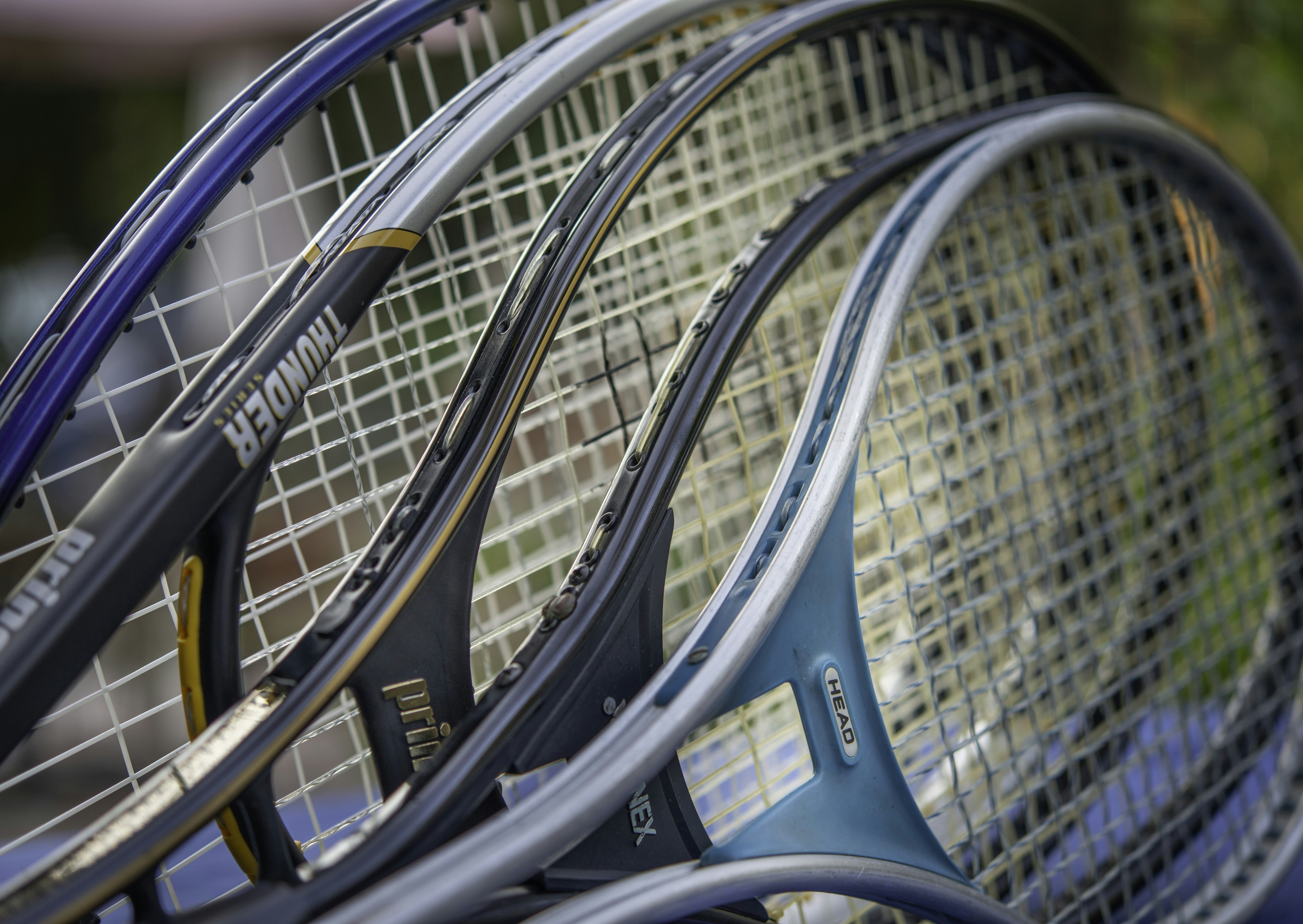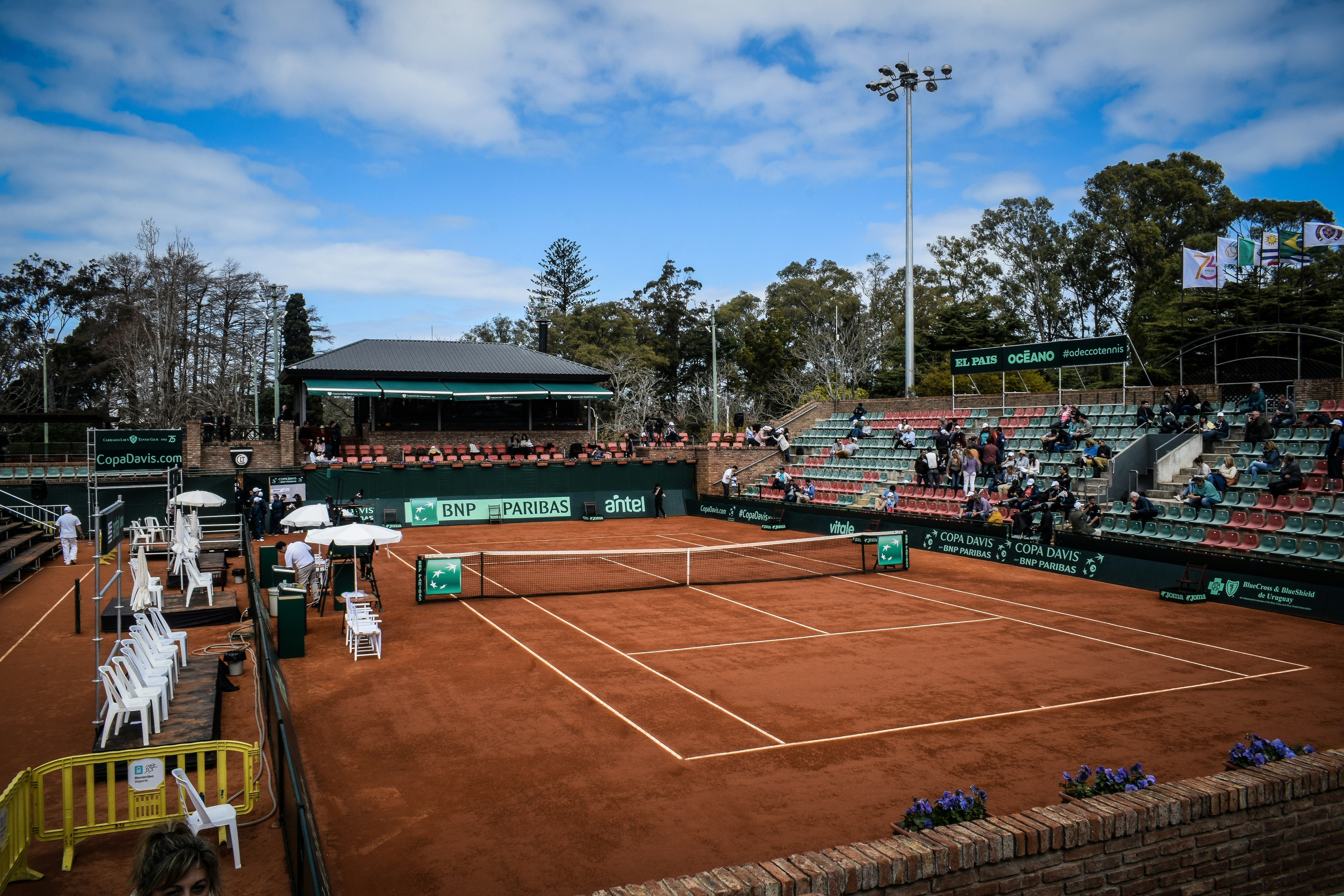If your child is eager to start playing tennis, you may be wondering what equipment they need to get started. In order to set your little athlete up for success, a few key items are essential. First and foremost, they will need a tennis racket that is the right size and weight for their age and skill level. Additionally, a comfortable pair of tennis shoes with good grip will ensure they can confidently move around the court. Finally, don’t forget to provide them with plenty of tennis balls for practice and gameplay. With these basic items, your child will be well-equipped to begin their tennis journey.
Rackets
Choosing the right size
When it comes to choosing the right racket size for your child, it is important to consider their age, height, and skill level. Younger children often benefit from using smaller rackets, as these are easier to handle and control. As they grow and develop their skills, they can transition to larger rackets. It is recommended that you consult with a tennis coach or expert who can guide you in selecting the appropriate size for your child.
Types of rackets
There are several types of tennis rackets available, each designed for different playing styles and skill levels. Beginners might start with lightweight rackets that offer a larger sweet spot, providing more forgiveness for off-center hits. As your child progresses in their tennis journey, they can consider transitioning to more advanced rackets that offer better control and power. It is important to ensure that the racket is suitable for your child’s age, skill level, and physical abilities.
Grip sizing
Having the correct grip size is crucial for your child’s comfort and performance on the tennis court. An improper grip size can lead to discomfort, injuries, and compromised technique. To determine the right grip size for your child, measure the distance from your child’s dominant hand’s middle crease to the tip of their ring finger. This measurement will help you choose the appropriate grip size, ensuring a comfortable and secure hold on the racket.
String tension
String tension plays a significant role in a racket’s performance and feel. For beginners, a lower string tension is generally recommended as it offers more power and a larger sweet spot. As your child progresses in their tennis skills, they may opt for higher string tensions that provide more control and precision. It is worth noting that string tension is a personal preference, and experimentation may be necessary to find the perfect balance for your child’s playing style and skill level.
Balls
Types of tennis balls
Tennis balls come in various types, each with its own characteristics suited for different playing surfaces and skill levels. The most common types include standard or regular-duty balls, which are ideal for playing on clay or indoor courts. Extra-duty balls are designed for hard court surfaces, providing more durability and longevity. Low compression balls, such as foam or felt balls, are great options for beginners or young children as they move slower through the air, making it easier to hit and control.
Choosing the right ball for beginners
For beginners, it is essential to choose balls that are appropriate for their age and skill level. Low compression balls are highly recommended as they are easier to hit and provide a slower pace, allowing beginners to develop their strokes and technique with more control. These balls also minimize the risk of injuries and frustrations, making the learning process more enjoyable for your child.
Quantity needed
When it comes to the quantity of tennis balls needed, it is always a good idea to have a few extra on hand. Balls tend to lose their bounce over time, and having spare balls ensures uninterrupted practice sessions. Depending on the intensity and frequency of your child’s tennis sessions, having approximately four to six balls per child should be sufficient. Additionally, it is important to regularly inspect the balls for signs of wear and tear to ensure optimal playability.
Court Shoes
Importance of proper footwear
Choosing the right court shoes for your child is essential for their safety and performance on the tennis court. Tennis requires quick, multi-directional movements, and proper footwear provides the necessary support, stability, and traction to prevent injuries. Regular athletic shoes or running shoes do not offer the same level of lateral support and durability required for tennis, increasing the risk of foot, ankle, and knee injuries.
Choosing the right tennis shoes
When selecting tennis shoes for your child, there are a few key factors to consider. Look for shoes specifically designed for tennis with features such as reinforced toe caps, lateral support, and durable outsoles. Good cushioning is also important to absorb the impact of the constant running and jumping on the court. Be sure to prioritize the fit and comfort of the shoes, as ill-fitting shoes can lead to blisters and discomfort during play.
Proper fit and support
To ensure a proper fit, it is recommended to have your child’s feet measured by a footwear specialist. Tennis shoes should provide ample toe room, with about half an inch of space between the longest toe and the front of the shoe. The heel should be snug, preventing excessive movement and providing stability. Additionally, make sure the shoes provide adequate arch support and cushioning, as this is crucial for preventing foot fatigue and discomfort during long matches or practice sessions.
Clothing
Appropriate attire for tennis
Wearing appropriate attire is not only a matter of style but also plays a crucial role in your child’s comfort and performance on the tennis court. Opt for lightweight, breathable fabrics that wick away moisture and allow for freedom of movement. Typical tennis attire includes a comfortable shirt or top, shorts, skirts, or leggings, and socks. It is important to note that some tennis clubs or facilities may have specific dress codes, so it’s wise to check before heading out.
Comfort and flexibility
Comfort and flexibility should be prioritized when selecting tennis clothing for your child. Tight or restrictive clothing can hinder their range of motion, making it challenging to execute fluid and powerful shots. Look for stretchable fabrics with moisture-wicking properties to keep your child cool and dry during intense matches or practice sessions. Avoid clothing with excessive embellishments or accessories that may distract or impede your child’s movement.
Protective accessories
In addition to appropriate attire, there are a few protective accessories that can enhance your child’s safety on the tennis court. A well-fitted hat or visor can provide shade and protect their face and eyes from the sun. Sunglasses with UV protection are also recommended to shield their eyes from harmful rays. Lastly, wristbands or sweatbands can help absorb sweat and prevent it from interfering with their grip on the racket.
Grips
Types of tennis grips
Tennis grips come in various styles, each offering unique advantages and suitability for different playing styles. The most common grips include the Eastern grip, Western grip, Continental grip, and Semi-Western grip. Each grip alters the angle and positioning of the hand on the racket handle, impacting the spin, power, and control of the shots. It is recommended for beginners to start with a basic grip, such as the Eastern grip, and gradually explore other grips as their skills progress.
Proper grip size
Having the correct grip size is crucial for maintaining control and preventing injuries. An oversized or undersized grip can result in discomfort, slippage, and reduced maneuverability. To determine the right grip size for your child, measure the distance from the tip of their ring finger to the second horizontal crease in their palm. This measurement will help you select the appropriate grip size or consult with a tennis specialist for further guidance.
Replacing worn-out grips
Over time, racket grips can become worn out, losing their tackiness and cushioning. It is important to replace worn-out grips to maintain a secure and comfortable hold on the racket. Signs of a worn-out grip include visible cracks, peeling, or a smooth, shiny surface. Replacing the grip is a relatively simple process and can be done using an overgrip or by having a professional re-wrap the handle with a new grip.
Bags
Purpose of tennis bags
Tennis bags serve the dual purpose of protecting and organizing your child’s tennis equipment. They are specifically designed to accommodate rackets, balls, shoes, clothing, and other accessories, making it convenient to transport everything to and from the tennis court. Tennis bags also offer additional storage compartments and features, such as insulated pockets for drinks or snacks, making them an essential accessory for any young tennis player.
Choosing the right size and style
When selecting a tennis bag for your child, consider the amount of equipment they carry and their personal preferences. Smaller bags with one or two compartments are suitable for beginners who have minimal equipment, while larger bags with multiple compartments are ideal for more advanced players with multiple rackets, balls, and other accessories. Additionally, consider the style and design of the bag, ensuring it reflects your child’s personality and taste.
Storage compartments and features
Tennis bags often come with various storage compartments and features to help keep your child’s equipment organized and easily accessible. Look for separate compartments for rackets, balls, shoes, and clothing to prevent items from moving around or getting damaged. Insulated pockets for drinks or snacks are helpful for keeping refreshments cool during hot matches or practice sessions. Adjustable straps and padded handles provide comfort and convenience when carrying the bag.
Training Aids
Importance of training aids
Training aids are valuable tools that can enhance your child’s tennis skills, providing feedback, assistance, and reinforcement during practice sessions. They can help improve technique, timing, footwork, and overall performance. Training aids can be especially beneficial for beginners, as they provide additional support and guidance in the early stages of learning the game. They can also add variety to training sessions, keeping your child engaged and motivated.
Examples of helpful tennis training aids
There are several tennis training aids available in the market, each targeting specific areas of improvement. Ball machines are excellent tools for practicing strokes and footwork, allowing your child to hit consistent balls without the need for a partner. Target cones or agility ladders can help improve footwork and on-court movement. Tennis rebounders or wall trainers are ideal for solo practice, as they allow your child to work on their shots and control.
Using aids for skill development
When incorporating training aids into your child’s tennis practice, it is important to ensure they are used correctly and in conjunction with proper technique. Consult with a tennis coach or instructor to determine the appropriate training aids for your child’s skill level and goals. It is also essential to supervise your child’s practice sessions to ensure safety and optimal use of the training aids.
Tennis Court Accessories
Necessary accessories for playing on a court
To fully enjoy and make the most of your child’s tennis experience, there are a few essential accessories required for playing on a tennis court. Net and post setup is necessary for creating the boundaries of the court and providing a target for shots. Boundary markers or lines are strategically placed to indicate in-bounds and out-of-bounds areas. Scoreboards or scorekeeping devices are helpful for keeping track of points during matches or practice sessions.
Net and post setup
Proper net and post setup is crucial for creating a regulation-sized tennis court. Ensure that the net is securely attached to the posts and that the height is adjusted to the standard specifications. The net should be taut and measure 3 feet in height in the center. It is important to regularly inspect the net and posts for any signs of wear or damage, as a faulty setup can impact gameplay and safety.
Boundary markers and scoreboards
Boundary markers or lines are used to define the boundaries of the tennis court, indicating which shots are in or out. Typically, these lines are painted on the court surface, clearly visible and evenly spaced. Scoreboards or scorekeeping devices are essential for keeping track of points during matches or practice sessions. There are various options available, ranging from simple handheld scorekeepers to electronic scoreboards. Choose the option that best suits your child’s needs and preferences.
Protective Gear
Importance of protecting vulnerable body parts
Protective gear plays a vital role in safeguarding your child’s vulnerable body parts during tennis matches or practice sessions. Tennis involves repetitive movements and fast-paced action, increasing the risk of injuries to areas such as the knees, elbows, wrists, and eyes. Wearing appropriate protective gear can significantly reduce the likelihood and severity of these injuries, allowing your child to play safely and confidently.
Types of protective gear available
There are several types of protective gear available that cater specifically to tennis players. Knee and elbow pads or braces provide support and cushioning to prevent impact-related injuries and reduce stress on the joints. Wristbands or wrist supports are designed to stabilize and protect the wrists during intense shots or dives. Sunglasses with UV protection and impact-resistant lenses shield the eyes from the sun’s harmful rays and potential eye injuries from stray balls or racquet contact.
Choosing the right gear for safety
When choosing protective gear for your child, prioritize items that are specifically designed for tennis or other racquet sports. They should be lightweight, comfortable, and adjustable for a secure fit. Look for gear that offers appropriate padding, cushioning, and stability without restricting movement or causing unnecessary discomfort. Additionally, ensure that any eyewear provides proper UV protection, impact resistance, and a comfortable yet secure fit.
Stringing Machines
Benefits of stringing machines
Stringing machines are invaluable tools for tennis players, allowing for precise and consistent racket stringing. They enable players to customize the tension and type of strings used, providing optimal performance based on individual preferences and playing styles. Stringing machines also offer cost savings, as string replacements can be done at home rather than relying on professional stringing services.
Types of stringing machines
There are two main types of stringing machines: drop weight machines and electronic machines. Drop weight machines rely on a weighted lever system to apply tension to the strings, while electronic machines utilize motorized systems for precise and automated string tensioning. Drop weight machines are generally more affordable and user-friendly for beginners, while electronic machines offer greater control and efficiency for advanced players or frequent stringers.
Considerations for purchasing one
When considering the purchase of a stringing machine, it is important to evaluate your child’s needs and skill level. Beginners might prioritize affordability and ease of use, making a drop-weight machine an ideal choice. More advanced players or frequent stringers may benefit from the precision and efficiency offered by electronic machines. Additionally, consider the frequency of string replacements, cost of replacement parts, and available space for storing the stringing machine.
In conclusion, starting your child’s tennis journey requires careful consideration of the necessary equipment. From choosing the right racket size and type to selecting appropriate court shoes and clothing, every aspect contributes to their comfort, safety, and enjoyment on the court. Additionally, investing in training aids, protective gear, and accessories can enhance their skills and overall playing experience. Remember to consult with tennis professionals and educate yourself on the latest equipment trends to ensure your child has the best equipment suited for their age, skill level, and playing style. With the right equipment, your child will be well-equipped to embrace the wonderful sport of tennis and all the physical and mental benefits it brings.
